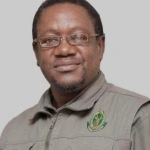Twenty-one children between the ages of zero and 17 have been airlifted, along with 46 other patients, since August 2024, thanks to the Government’s new air ambulance service operated by Russian company HeliDrive.
The first beneficiary of the initiative was a cardiac arrest patient airlifted from Chegutu District Hospital, Mashonaland West Province, to Sally Mugabe Central Hospital in Harare on August 24.
With the Government footing the bill, this service has been a lifesaver for many, especially in emergencies where timely medical attention is crucial.
It is also heartening to see initiatives like the air ambulance service making a difference in the lives of children and families in need.
The zero to five age group benefited more, with 16 patients having been airlifted, while three between the ages of six and 12 benefited. Also, two patients aged between 12 and 17 were successfully airlifted to referral healthcare facilities.
To date, 64 beneficiaries were in hospital transfers, while three were victims of road traffic accidents, with 37 of them being females. Of these, 43 were between 18 and 64 years old while three were above 65 years of age.
Helidrive Zim medical director Dr Freddy Mhondiwa said most of the patients that have been airlifted are neonates born with congenital defects that require surgeries.
“The majority of children we have been airlifting are mostly neonates born with congenital defects and had to be sent to Sally Mugabe Central Hospital and Parirenyatwa hospitals for corrective surgeries.
“Our main challenge was with ground ambulances to ferry patients from the helicopter to the hospital, but this has been solved as the Ministry of Health has given two state-of-the-art ambulances to Parirenyatwa Hospital to help with problem,’ he said.
“Notably, most of the patients were airlifted from rural provinces, particularly Mashonaland West and Mashonaland Central, and flown to Parirenyatwa Group of Hospitals and Sally Mugabe Central Hospital, which are the country’s major referral facilities, as well as Chinhoyi Provincial Hospital, and Chegutu District Hospital.’’
Chinhoyi Provincial Hospital, at 16, led in transfers, followed by Concession District Hospital with 15, Chegutu (12), and Bindura Provincial Hospital (10). Other hospitals from which patients were airlifted are Howard, Makumbe, Kadoma, and Mvurwi.
Principally, the initiative hinges on the need to provide en route critical care, which has seen the service thriving, owing to expert healthcare personnel and top-notch on-board equipment. It dovetails with President Mnangagwa’s modernisation efforts aimed at transforming Zimbabwe into a prosperous nation by 2030.
HeliDrive is training local professionals to operate the service, which includes six air ambulances stationed in Harare, Bulawayo, Mutare and Victoria Falls to ensure nationwide coverage.
The ambulances will transport patients to advanced medical facilities, handling various emergencies en route.
Forty pilots, 40 doctors, 50 nurses, 10 dispatchers, and 10 engineers are among the critical personnel being trained.
The Russian firm supplied Zimbabwe with modern helicopters, some of which will be deployed to the tourism sub-sector.
With statistics from the Traffic Safety Council of Zimbabwe (TSCZ) indicating that 4 250 accidents occur on the country’s roads each month, claiming casualties between 25 and 45 years, the air ambulance service is, indeed, a timely initiative.
President Mnangagwa is currently modernising the health sector as part of deliberate steps to create a modern, prosperous and highly industrialised country by 2030.
Air ambulances are primarily utilised to transport patients from inadequate levels of care to higher levels of intervention, or to repatriate them home if unable to travel via commercial flights.
These specialised aircraft are designed to navigate geographical barriers and provide the same level of medical care available in an intensive care unit (ICU).
Air ambulances are also sometimes necessary if a patient needs long-distance or emergency transport and is unable to use a commercial flight due to their medical condition.
The Herald











